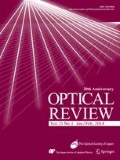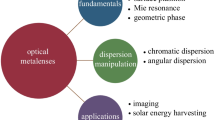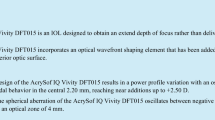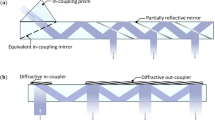Abstract
In order to understand the physical meaning of the best-fitting sphere of aspheric surface, based on the optical design idea of the aberration theory, the relationship between the curvature radius of the best-fitting sphere and the spherical aberration for the full aperture aspheric surface is set. The result is consistent with the traditional calculation method, which gets mainly from the geometric or algebraic. This formula explains the physical meaning of the best-fitting sphere of aspheric surface from the longitudinal spherical aberration: the curvature center of the best-fitting sphere moves compare with the vertex curvature center of the aspheric surface, and the amount of movement is one quarter of the longitudinal spherical aberration which the object is at the center of the vertex curvature of the aspheric mirror. Furthermore, the best-fitting sphere and asphericity for the annular aperture aspheric surface are also solved successfully. These formulas not only can help understand the best-fitting sphere from optics, but also calculation for off-axis aspheric surface is more convenient. The full aperture can be regarded as an annular aperture aspheric surface with zero inner diameter, the best-fitting spherical surface curvature radius and asphericity have unified calculation formulas for different aperture shapes of aspheric surfaces. All letters of the final expressions come from the parameters of aspheric surface itself, and each term is a clear physical quantity. Calculation is faster; concepts are easier to be understood. This is quite helpful for engineering.






Similar content being viewed by others
References
Karow, H.H.: Fabrication Methods for Precision Optics. Wiley, New York (1993)
Yan, L.S., Wang, X.K., Zheng, G.: Non-null testing for standard quadric surfaces with subaperture stitching technique. Opt. Commun. 340, 159–164 (2015)
Wu, T., Valera, J.D., Moore, A.J.: High-speed, sub-Nyquist interferometry. Opt. Express 19(11), 10111–10123 (2011)
Long, X.: A new definition and unified method for calculating optical asphericity. Opt. Int. J. Light Electron Opt. 195, 163136 (2019)
Malacara, D.: Some parameters and characteristics of an off-axis paraboloid. Opt. Eng. 30(9), 1277–1280 (1991)
Wang, Z.W., Qu, W.J., Asundi, A.: A simplified expression for aspheric surface fitting. Opt. Int. J. Light Electron Opt. 140, 291–298 (2017)
Octavio, C.N., Alejandro, C.R., Rufino, D.U.: Conic that best fittings an off-axis conic section. Appl. Opt. 25(19), 3585 (1986)
Zheng, L.X., Zhu, Z.: Methods to determine best-fitting sphere for off-axis aspheric surface. Proc. SPIE 6722, 672245 (2007)
Pan, J.H.: The Design, Processing and Testing of the Optical Aspheric Surface. Science Press, Beijing (2004). (in Chinese)
Saito, K.: Derivation of conventional formula of the third-order aberration for off-axial optical system. Opt. Rev. 26, 406–410 (2019)
Pan, B.Z., Tang, J., Wang, A.H.: Design strategy for flat-field Schmidt optical system. Opt. Int. J. Light Electron Opt. 125, 1585–1588 (2014)
Smith, Warren J.: Modern Lens Design. Mc-Graw Hill Professional Engineering, New York (2004)
Author information
Authors and Affiliations
Corresponding author
Additional information
Publisher's Note
Springer Nature remains neutral with regard to jurisdictional claims in published maps and institutional affiliations.
Rights and permissions
About this article
Cite this article
Pan, Bz., Tang, J. Best-fitting sphere of aspheric surface based on spherical aberration. Opt Rev 27, 332–338 (2020). https://doi.org/10.1007/s10043-020-00599-4
Received:
Accepted:
Published:
Issue Date:
DOI: https://doi.org/10.1007/s10043-020-00599-4




